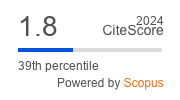Magnetic Resonance Imaging in Antennas
DOI:
https://doi.org/10.31838/NJAP/04.02.05Keywords:
LNA (Low Noise Amplifier), Array factor, Mutual coupling, Diversity, Interference, Channel capacityAbstract
Magnetic Resonance Imaging (MRI) has emerged as a powerful tool for characterizing antennas and analyzing their electromagnetic properties. This comprehensive review delves into the principles, methodologies, and applications of MRI in antenna engineering, covering topics such as magnetic field mapping, resonance phenomena, imaging techniques, and practical applications. By examining the intersection of MRI and antenna engineering, this review aims to elucidate the significance of MRI in understanding antenna behavior, optimizing design parameters, and advancing wireless communication, sensing, and imaging technologies.










